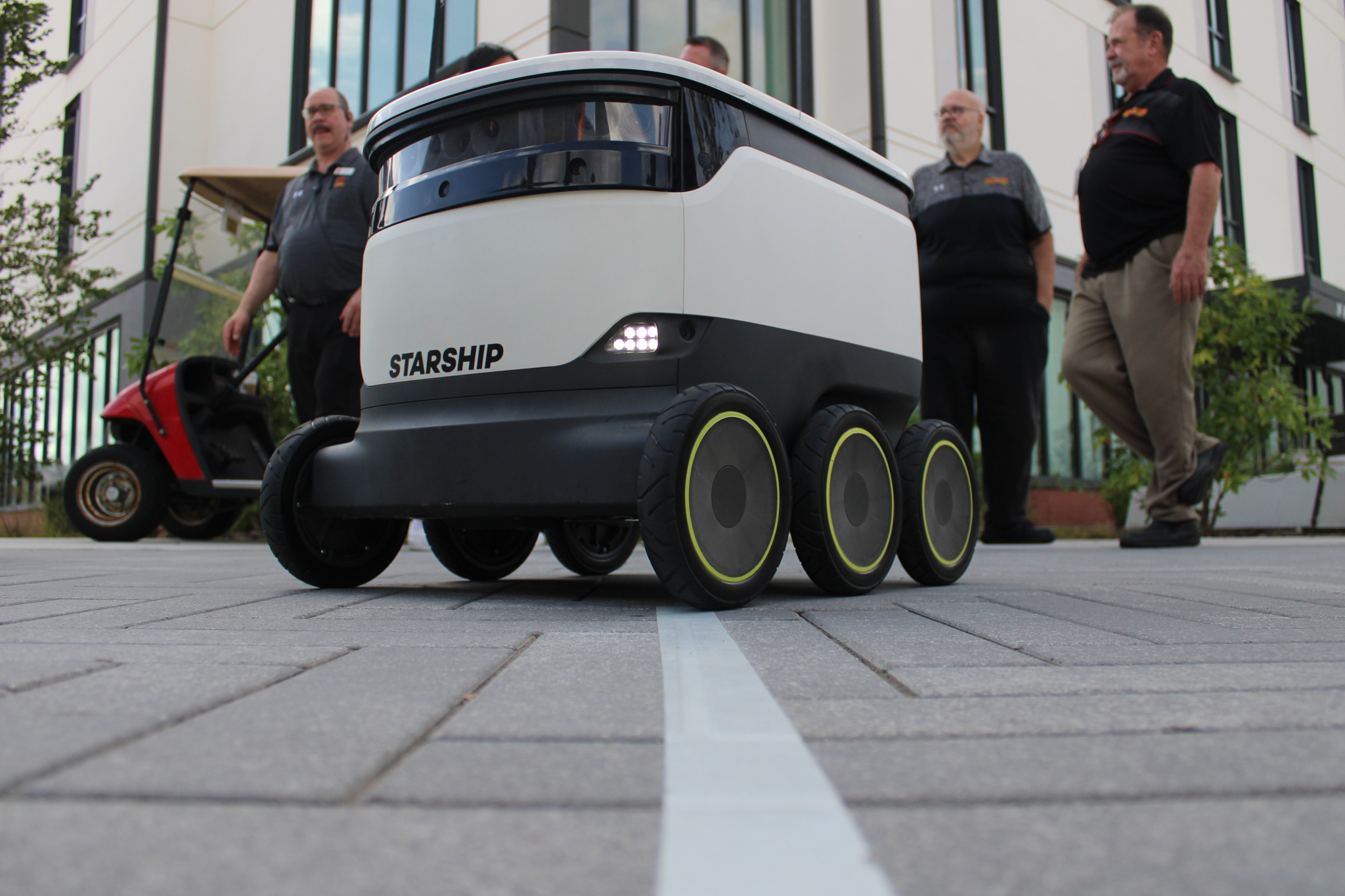Views expressed in opinion columns are the author’s own.
It’s no secret that college is stressful — many students are drowning in exams right now. It’s sometimes hard to even find time to sit down for a meal. The other day, it took me three laps around the dining hall to find an empty seat in Yahentamitsi Dining Hall to grab lunch before rushing off to class. I still ended up being late, despite my best efforts to scarf down my rice and Mongolian Grill beef as quickly as possible.
While eating, I read about how the University of Maryland might partner with Starship Technologies, a company that creates robots to deliver food using Grubhub or the Starship app. Starship Technologies’ current business model suggests students could order food from local businesses to be delivered via robots. Students would be required to pay in cash or dining dollars, depending on the restaurant. Basically, it’s Uber Eats without the calls from your driver as they struggle to find a way to your dorm hall.
It seemed amazing, until I remembered I can’t afford to use Grubhub frequently and rely on my dining plan to eat. There needs to be another option for all of us in this predicament of being broke and not having much time in our day.
The university might believe unveiling robot delivery machines will help solve students’ problems, but that’s not true. Robots would only overcomplicate student dining and could cost more than the alternative — simply providing takeout containers at our three dining halls.
All dorming students living in traditional residence halls are required to pay around $3,000 per semester for the most basic unlimited dining plan option, and we have to spend even more money to access food outside of the dining hall when we want to eat in dorms or simply don’t have time to sit in a dining hall.
Currently, dining hall rules only allow students to takeout a handheld dessert or piece of fruit. Bringing outside containers to remove food from the dining hall is considered theft as defined in the rights and responsibilities of dining hall rules.
During previous COVID-19 surges, students were able to use takeout boxes at multiple points in the pandemic. A new takeout option would still be beneficial to students’ wellbeing and would likely be more cost-effective than robots because the university wouldn’t need to enter a partnership with a company and students wouldn’t have to shell out delivery fees.
Rather than using our own money, students should be able to takeout a meal from the nearest dining hall. This would be simple, cheap and hygienic.
As a known technology school, the university is likely looking to maintain its image by putting flashy high tech robots all over campus. This is perfectly in line with their hatred for traditional takeout, as students have been denied this simple pleasure over costs and potential hygiene risks.
Despite being forbidden, students definitely already sneak their own containers into dining halls to bring food back to their dorms. This raises the issue of hygiene as there’s no guarantee those containers are clean. But the university could easily solve this problem by providing students with takeout boxes.
Furthermore, the university can decide on container sizes and thereby determine takeout portion sizes. Students wouldn’t be stuffing their favorite dining hall foods into a large tupperware from Amazon, they’d be restricted to only taking as many as can fit in the provided box. This would allow dining services to plan how much food is set aside for takeout.
Of course, with the university priding itself on sustainability, the containers should also be compostable to reduce food waste. On the boxes, students would be encouraged to compost both the box and everything inside. Previous takeout containers were made of cardboard, which ended up in landfills. The new bowls wouldn’t repeat this issue by providing a compostable alternative. Takeout bowls also don’t only have to be for students who want to go in and out of the dining hall to get a meal. After eating, students can box up their remaining food instead of throwing it out.
Even with the added cost of buying containers, dining halls will likely face lower food costs due to wastefulness. Reducing food waste and reducing the possibility of students stealing away food in gallon-sized containers will be an overall financial benefit for the university. It will be an even greater moral benefit.
If cost is truly the biggest concern behind the university choosing to not provide takeout boxes, then a fleet of robots will be no better. The university needs to dedicate funds toward re-introducing takeout boxes, so we can actually get our money’s worth from mandatory dining plans. Our financial contributions to the school shouldn’t go toward another useless project.
Lynelle Essilfie is a freshman public policy major. She can be reached at lessifi@terpmail.umd.edu.



